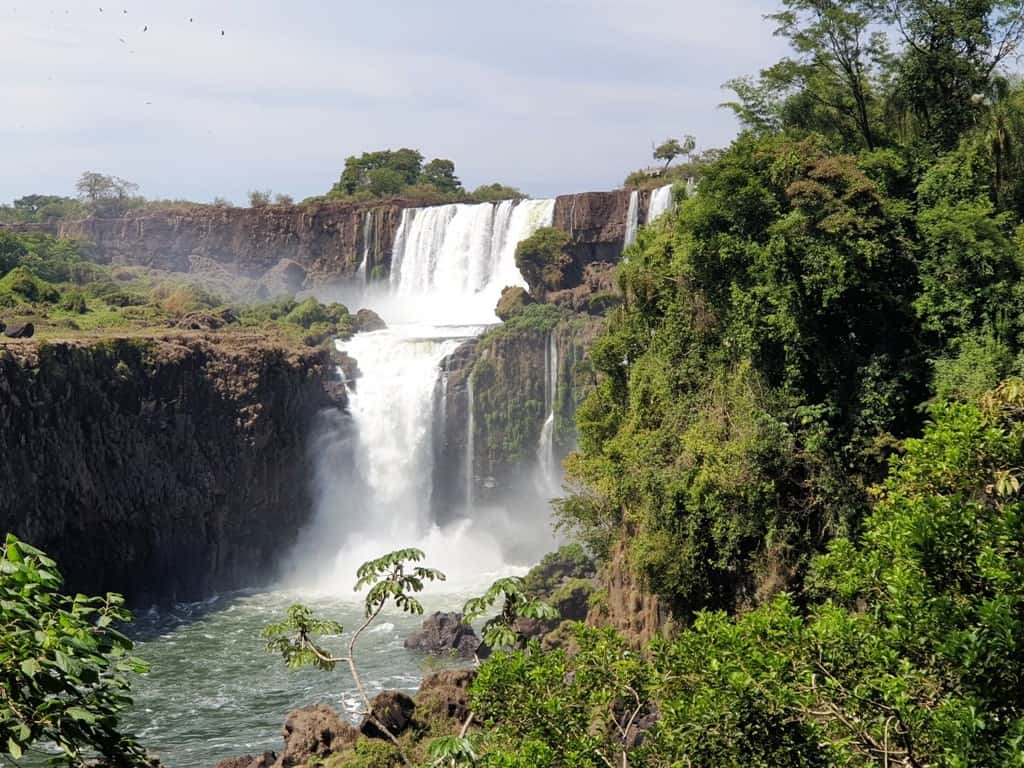Iguazu Falls are the largest waterfall in the world, comprising falls on both the Brazil and Argentina sides. While not the tallest waterfall in the world (that honor goes to Victoria Falls), Iguazu is the widest falls and also has the world’s highest recorded flow. 80% of the falls are located within Argentina, though much of the river basin is in Brazil.
Iguazu Falls is a UNESCO World Heritage Site – the Argentinian side was listed in 1984 and the Brazil side in 1986 – but both countries listed the falls as National Parks back in the 1930s. The Argentinian national park is home to endemic wildlife and several great hiking trails, as well as a boating experience that will take you up close and personal with the waterfalls.
The falls are a popular tourist attraction and are accessible from both Buenos Aires and cities across Brazil. There are two main towns near the park entrance, one in each country, that form the base for most travelers visiting Iguazu Falls, though some travelers choose to stay in the park itself.
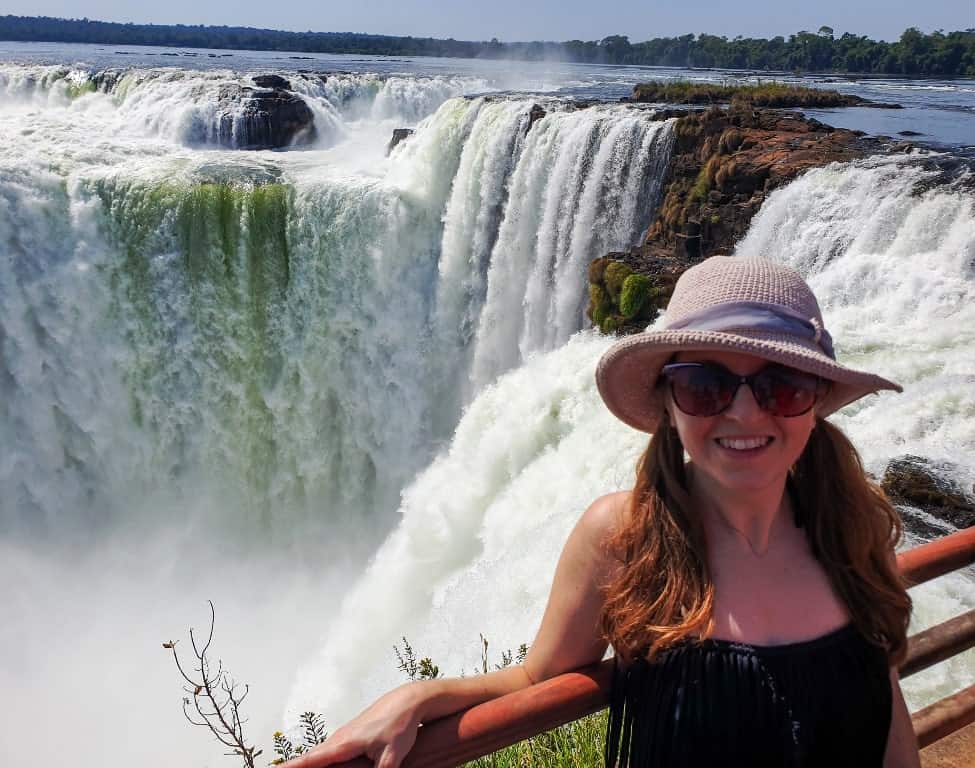
Table of Contents
How to Visit the Argentinian Side of the Iguazu Falls
How to get to Iguazu Falls from Buenos Aires
Aerolíneas Argentina and LATAM Argentina both fly nonstop into Cataratas del Iguazú International Airport (IGR) from Buenos Aires. There are airport shuttles from the airport into Puerto Iguazu. It is possible to take a bus from the major cities, however, it is nearly a full day’s drive away.
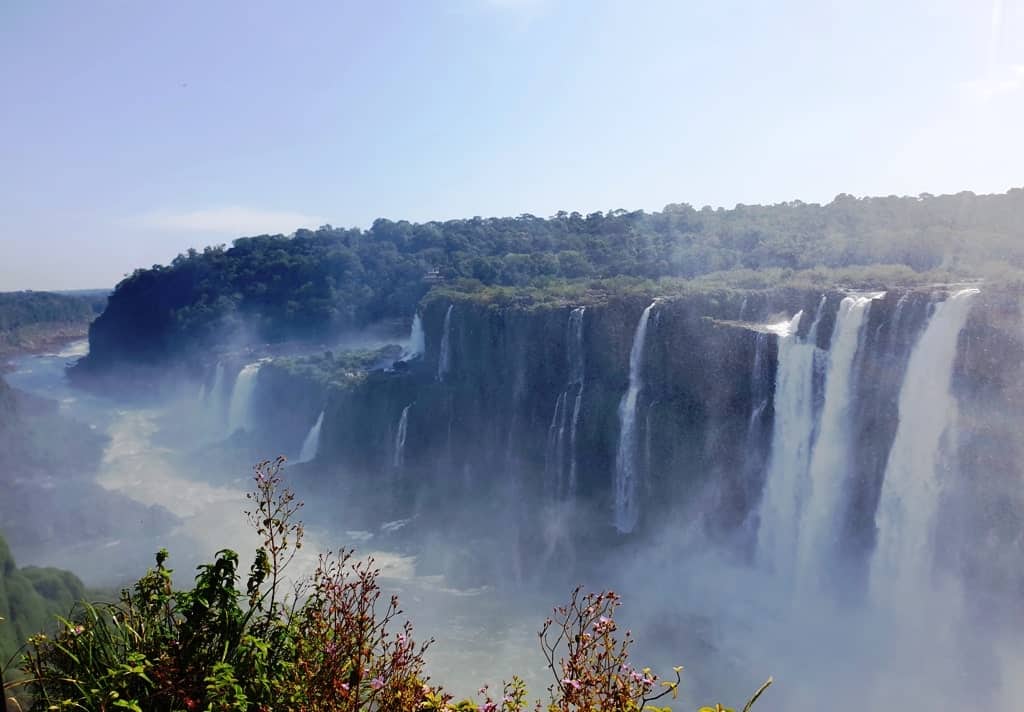
How to get from Puerto Iguazu to the Falls
The best way to get from Puerto Iguazu to the falls is by car or group tour. If you self-drive, you will have to park at the park entrance and take the forest train through the park to the various stops. There are many walking trails and viewing platforms to explore!
Another option is to take a guided tour through the park. Many tour operators pick up at the hotels in Puerto Iguazu and take you to the park on a bus. You have options for small group tours, large group tours, or private tours.
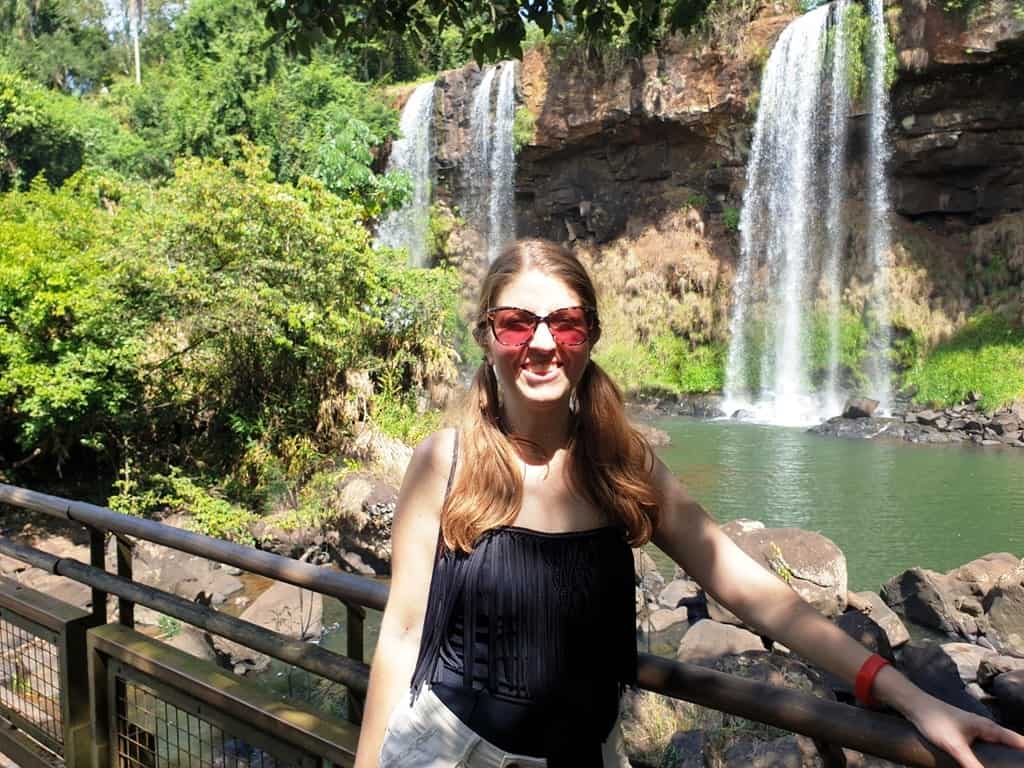
Best Time to Visit the Iguazu Falls in Argentina
The Iguazu Falls are within a humid subtropical climate, and as such have a dry and a rainy season. They are located within the southern hemisphere, as well, meaning the seasons are switched for those of us in the northern hemisphere. The best times to visit are April to June (except the Easter holiday weekend!) and September to November. This is when there will be fewer visitors and better weather. The summer months – December to February – are crowded and rainier, although that means the falls may be more “active”.
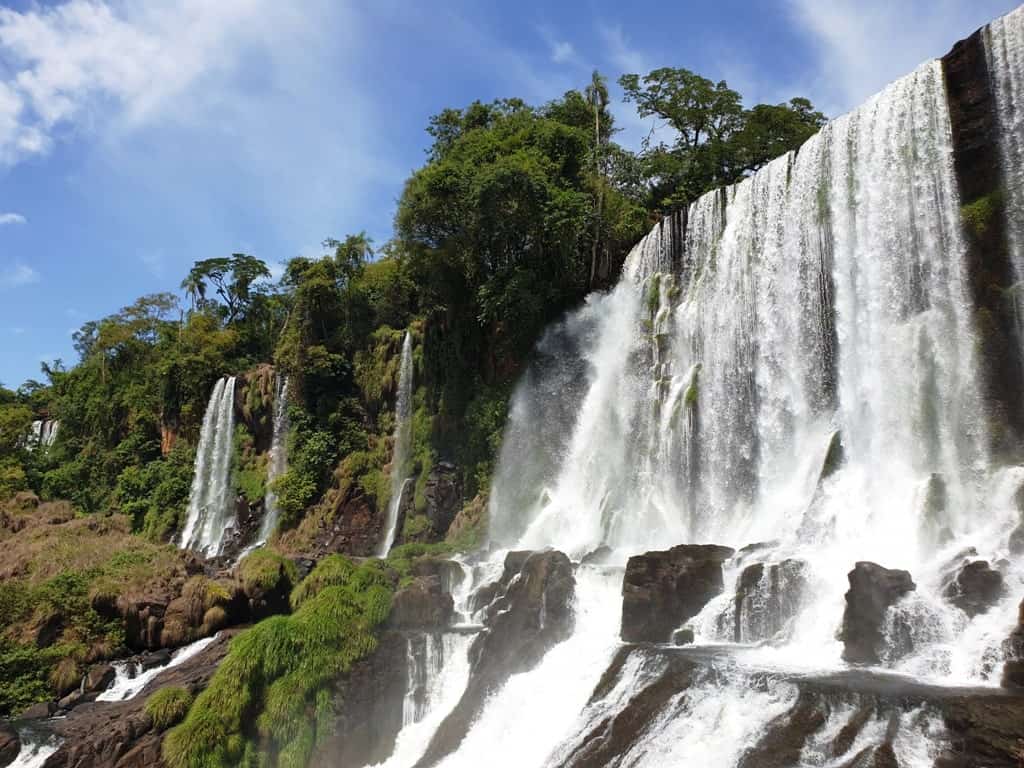
Where to Stay during your visit
In Puerto Iguazu, which is 20km away from the park entrance, I recommend the Jardin de Iguazu hotel. If you prefer to stay within the park, I recommend the Melia Iguazu hotel.
Hotel Jardin de Iguazu
The 3-star Hotel Jardin de Iguazu is located in the center of Puerto Iguazu. It is a small, well-kept hotel with comfortable rooms and apartments. The hotel offers a buffet breakfast and has a small bar. Guests at the hotel can also use the pool, garden, and spa facilities.
Gran Melia Iguazu
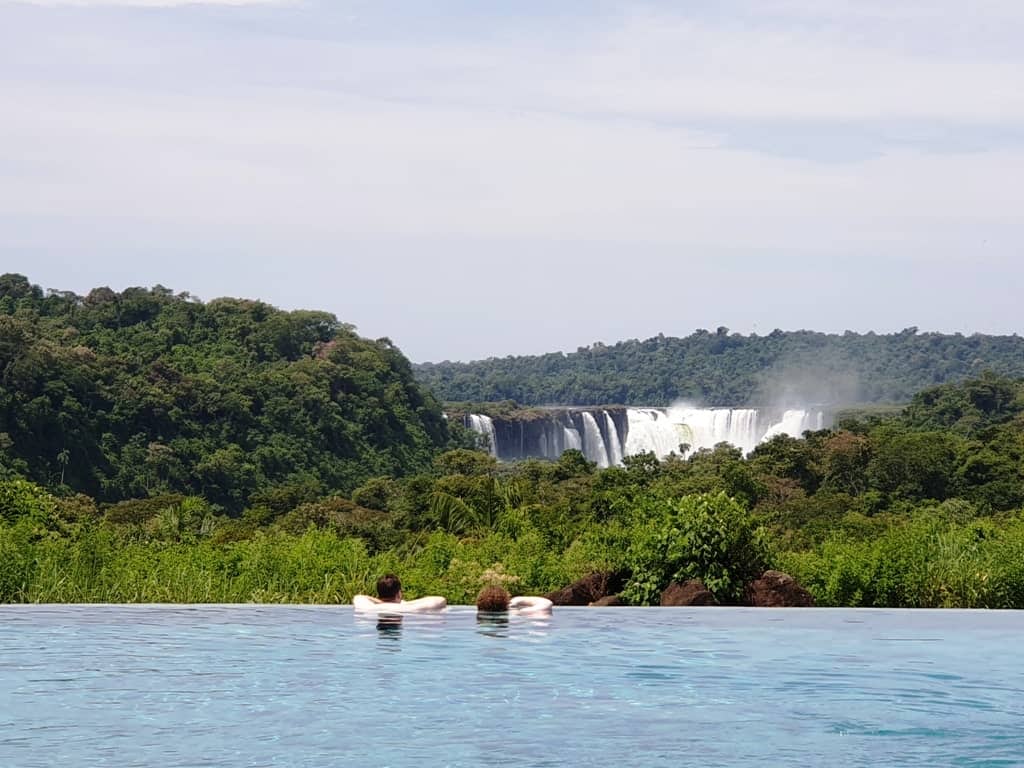
Within the park boundary lies the 5-star Gran Melia Iguazu. The hotel offers views of the falls, several restaurants and bars, an infinity pool, and a large spa. Rooms and suites are spacious, with modern bathrooms, minibars, and balconies. Be sure to request a room overlooking the falls!
Admission Costs and Opening Hours
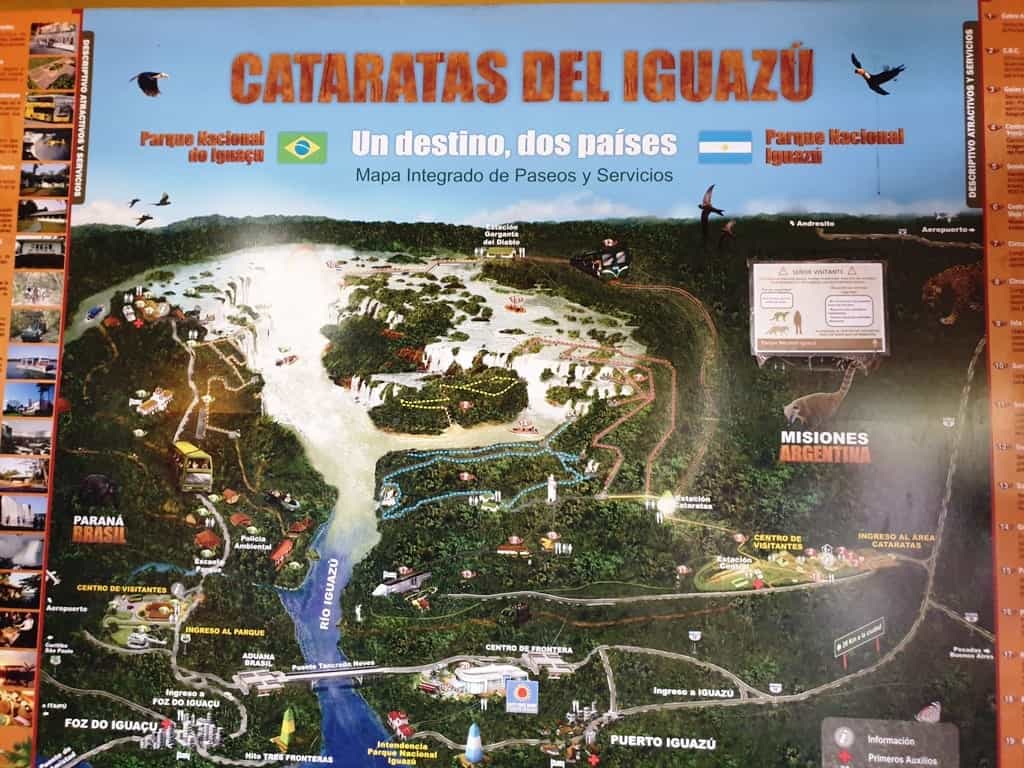
Admission to Iguazu Falls is relatively inexpensive, at only $15 USD (800 ARS) as of April 2020. The entry fee includes access to the park, the circuits, and the ecological train.
The park is open from 8:00 am to 6:00 pm; the last entry to the park is at 4:30 pm.
Rainforest Ecological Train
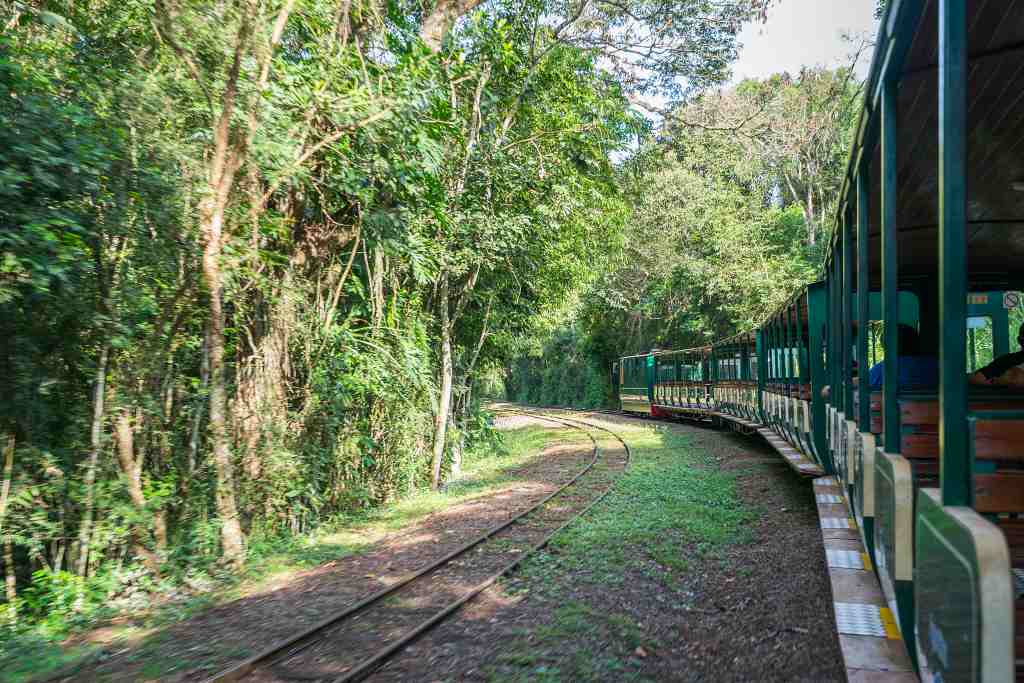
The Rainforest Ecological Train travels within the park, ferrying people to and from various viewing platforms and trailheads. It was designed to be an eco-friendly train to maintain the integrity of the jungle. The train uses a special fuel that doesn’t emit any waste or smoke. It is also a noiseless train so as not to disturb the wildlife in the park.
The Rainforest Ecological Train is an open-air train and carries 250 people. It runs regularly every 15-20 minutes so you are never waiting very long. The main station is at the visitors center, with one station in the center of the park at Cataratas, and a third at the entrance to the walk to Devil’s Throat.
Green Trail
The Green Trail connects the visitors center with the Cataratas train station. It is a flat, paved path, only 655m in length, and is easy for most people. You may be able to spot some wildlife along the Green Trail. If you are hiking the Superior or Lower circuits, you can use this trail to connect with these two trailheads.
Superior Circuit
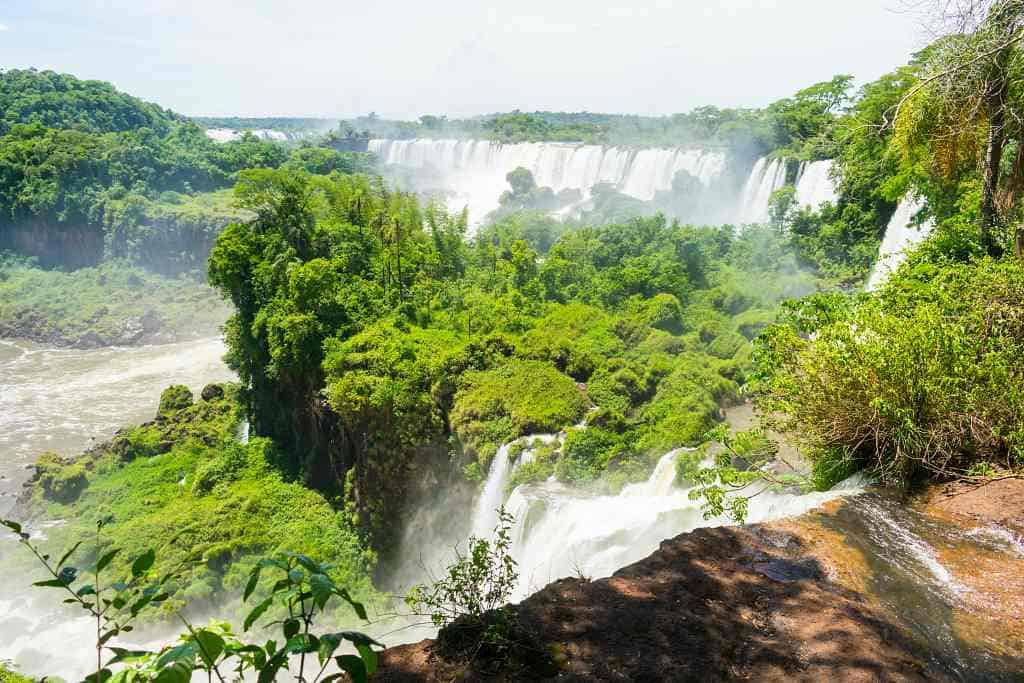
The Superior Circuit is about 1.75km round trip and offers walkers an above view of some of the smaller falls, like Dos Hermanas, Chico, Ramirez, Bosetti, Adan, and Eva, Mendez, and Mbiguá waterfalls, as well as the lower circuit trail. The superior circuit begins at the central station and ends at a platform where you can view the falls and enjoy a panoramic view of the Argentine and Brazilian national parks. You cannot see the Devil’s Throat from here. There are no steps or steep elevations here and this trail is relatively easy for most people.
Lower Circuit
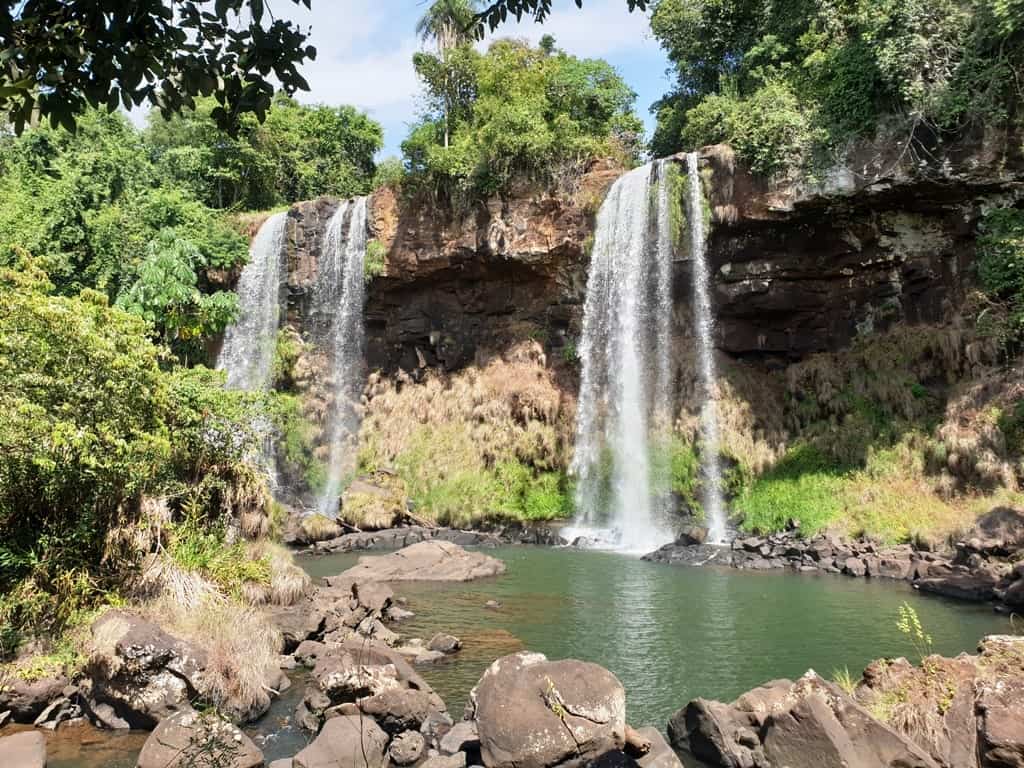
The Lower Circuit winds through the pristine rainforest on manicured trails. This is a great place to see some of the wildlife native to the park. The lower circuit trail ends at a viewing platform in front of the Dos Hermanas waterfall, where you can also sit and enjoy the view.
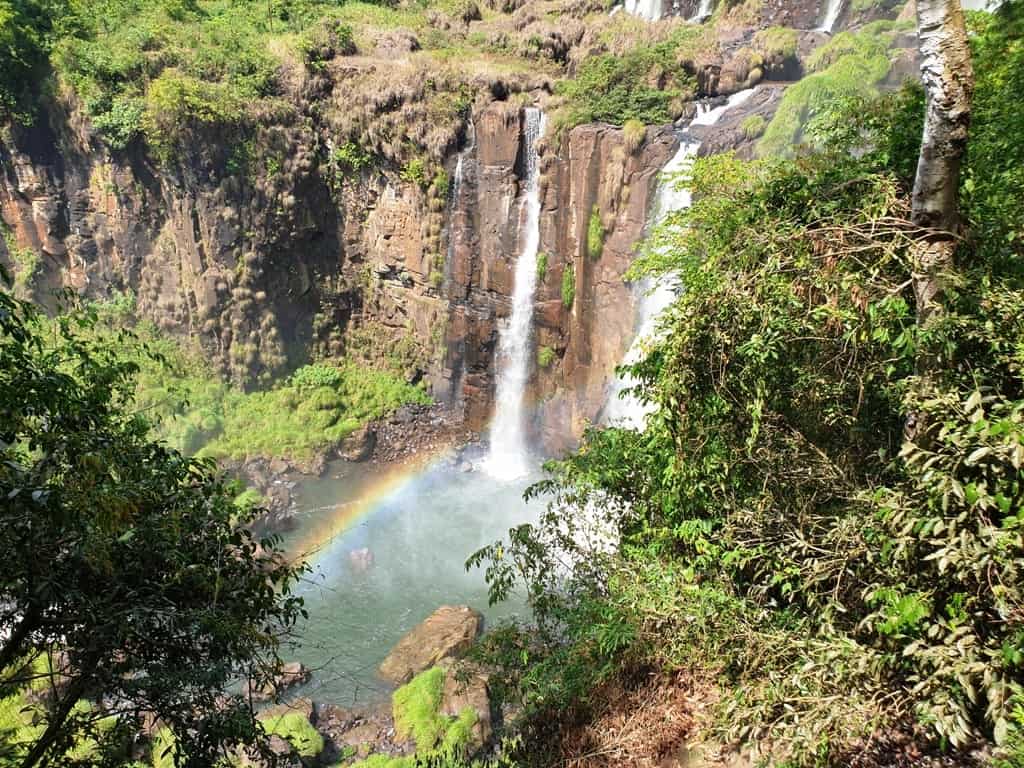
The trail offers tantalizing glimpses of the Devil’s Throat but you won’t be able to see the full scope from here. There are some steep elevation gains and steps, so this can be a challenging trail for some people.
Macuco Trail
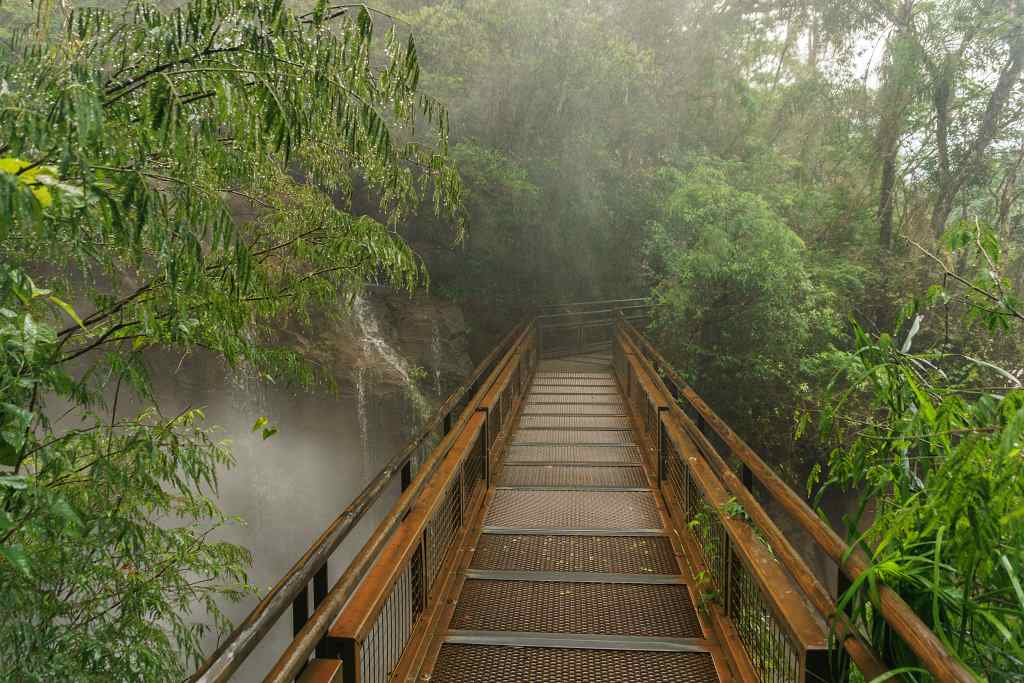
For more adventurous walkers, the Macuco Trail takes you into the jungle with very few others. The trail begins at a small trailhead near the visitors’ center and goes into the rainforest on a small, simple path. Along the Macuco Trail, you might spot wildlife and birds that aren’t common in the rest of the park due to the lack of people and infrastructure here.
There are no restrooms or viewing platforms on this trail. At the end of the trail is the Arrechea waterfall. Once you have reached this point, you must return the way you came in.
Devil’s Throat
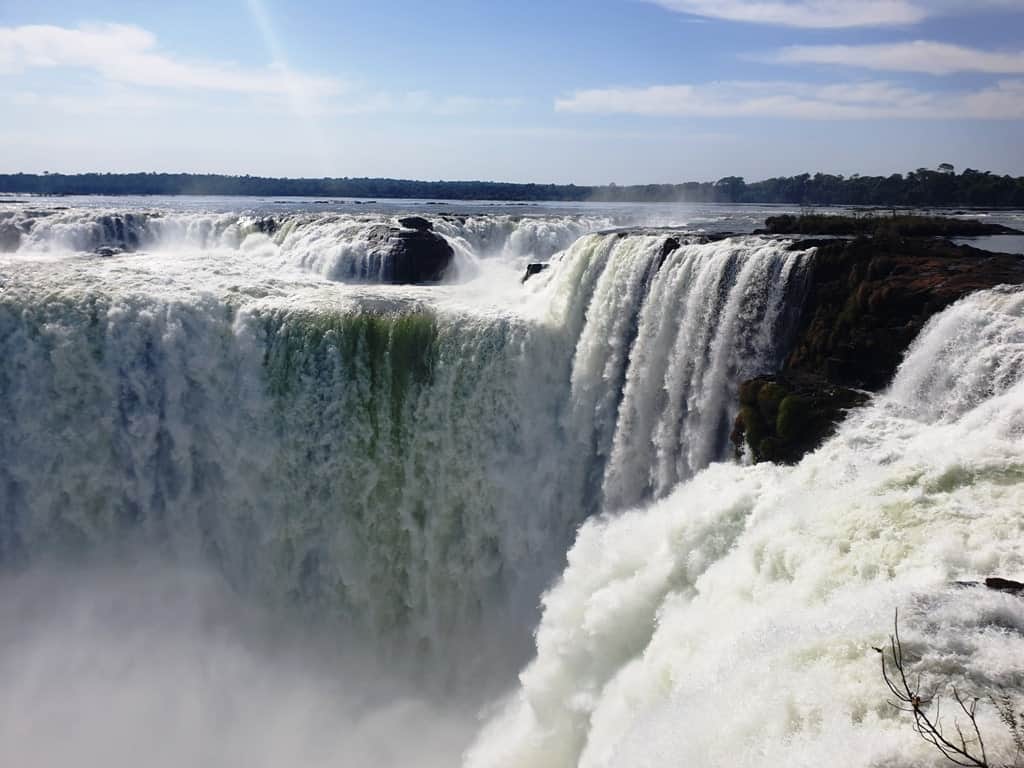
The Devil’s Throat is the most picturesque and common part of Iguazu Falls. It is a narrow chasm through which nearly half the river flows and falls. From the viewing platforms above, visitors have views of the falls and lower river.
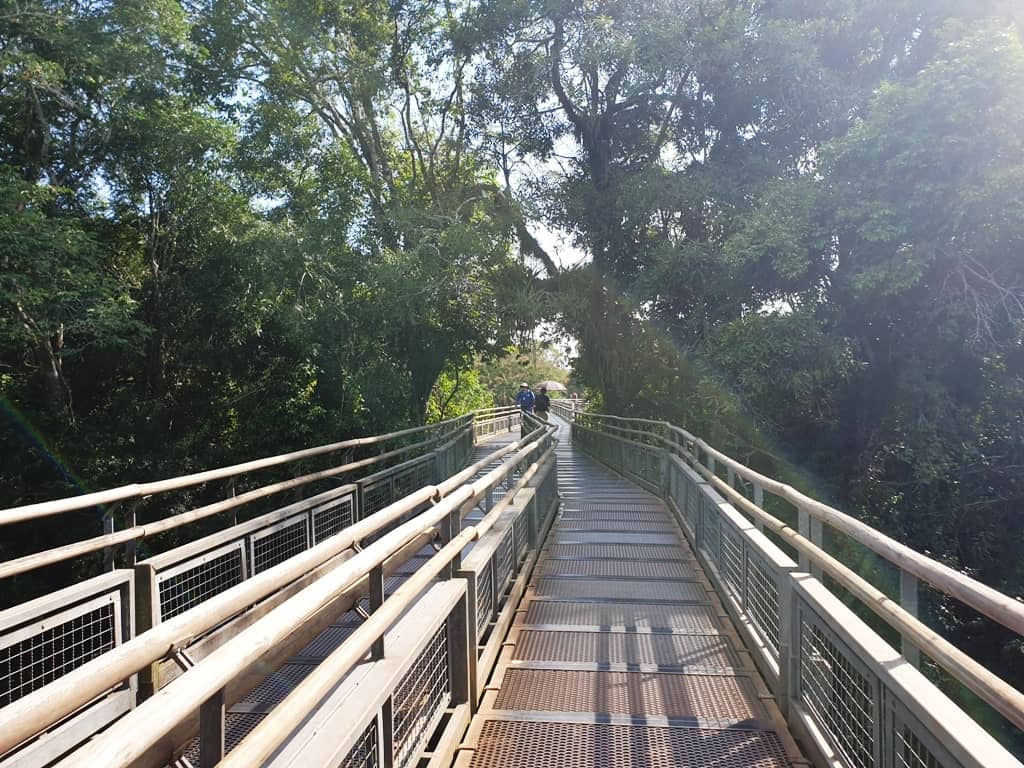
To get here, you must take the Rainforest Ecological Train to the last station, and then walk approximately 2200 meters from the station to the viewing platform. There are places to stop and rest along the way. The Devil’s Throat is often crowded, so visitors staying within the park are advised to take the first train so as to be there before the crowds.
If you are in Iguazu Falls during the full moon, you can participate in the full moon walk at the Devil’s Circuit.
Gran Aventura Boat Trip
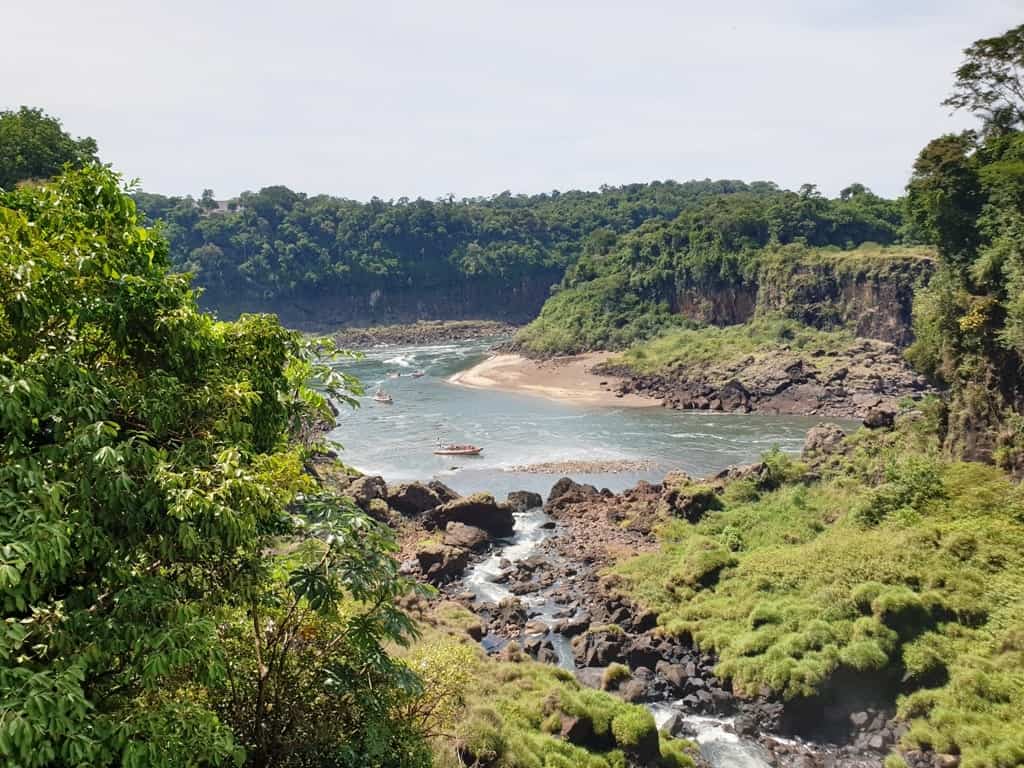
To fully immerse yourself in the falls and the jungle, the Gran Aventura boat trip is a perfect choice. The tour begins at the visitors center, where guests board small, eco-friendly bus trucks to explore the rainforest. Bilingual (Spanish and English) guides onboard each truck share the native history and wildlife of the region with passengers.
Upon arriving at the dock, guests board a small boat that cruises up the river from Puerto Macuco to the falls. There are rapids in the river, and guests can expect to get completely soaked with water. You truly get the most spectacular view of the falls from the boats, however. You will get the chance to see the Tres Mosqueteros Fall, Devil’s Throat, and the second-largest San Martín waterfall. The boats get very close to this last one.
This is an active adventure and guests must be able to walk up and down hills to and from the boat dock. Children under the age of 12 are not permitted on the tour, and there are other passenger restrictions. The entire tour lasts about 2.5 hours.
Wildlife in The Iguazu
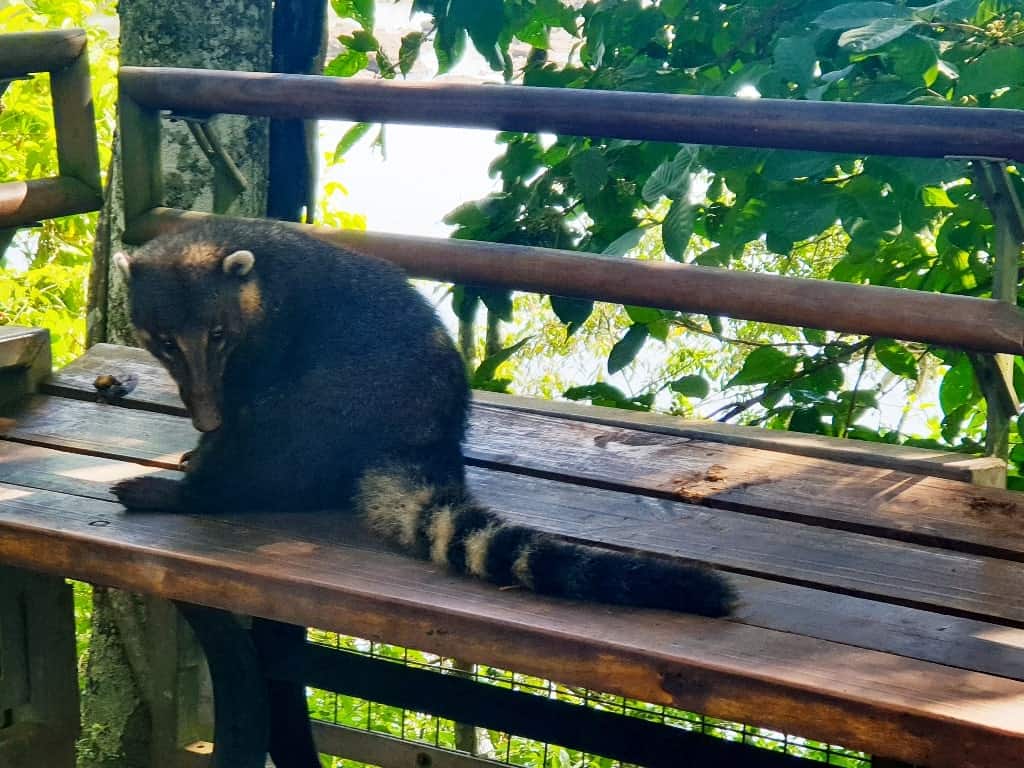
There is some wonderful wildlife within the Iguazu Falls parks, many of which cannot be found anywhere else in the world. Coaties, tapirs, and monkey cai are among the mammals you will find at the park. There are also yaguarete, or little jaguars, which are common and native to the area but not within the park grounds.
Birdlife is abundant here as well. Toucans are the most common birds spotted, typically in the Devil’s Throat area.
Visiting the Brazilian Side of Iguazu Falls
Of course, Argentina is not the only country with Iguazu Falls, and it is possible to visit both sides of the falls while on your trip. If you are staying in Argentina and wish to cross into Brazil to view the falls, you can do so from Puerto Iguazu. It would be best to have a guide help you make this crossing as the immigration checks are not located near each other but rather on opposite ends of a long bridge.
The local buses do not stop at immigration as the locals don’t have to, so if you choose this option make sure to tell the drivers you need to stop at the border! The local town on this side is called Foz do Iguacu. The national park on the Brazil side is much larger, but there is only one circuit. Exploring the waterfalls from here will take just about half a day to visit. The park is open from 9 am to 6 pm and as of April 2020 costs about $18 USD (Real 72).
Iguazu Falls is a wonderful place to visit on your trip to either Argentina or Brazil. While it is still a trip away from the major cities, it is an entirely different world. The national park and UNESCO World Heritage Site are unique ecosystems, complete with wildlife you will not find anywhere else in the world. And the waterfalls at Iguazu are the world’s most impressive waterfalls!
The Argentinian side is perfect for active adventurers and hikers, as there are many trails to explore. The Gran Aventura boat trip is an exciting way to experience the waterfalls (but be sure to bring a change of clothes!). It would be impossible to be disappointed in the awe-inspiring Iguazu Falls!

